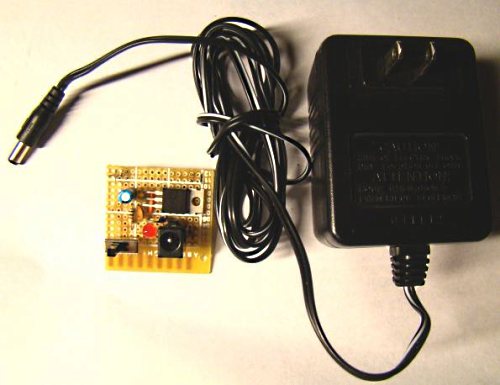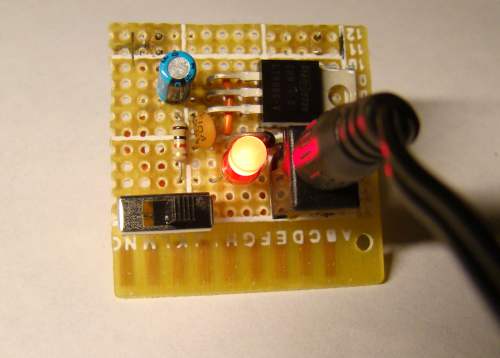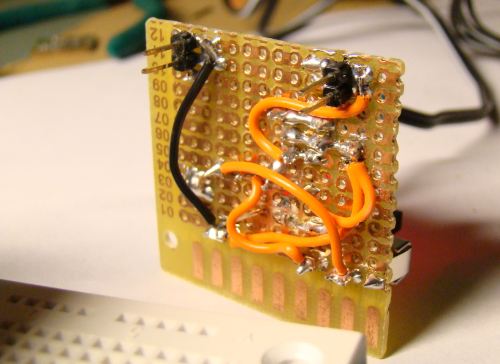Regulated Power Supply for Your Breadboard

Embedded systems require electric power to operate. Most of the components in them including the processors can operate at a wide range of voltages. For example, the operating voltage range for PIC16F688 is from 2 to 5.5 V. It means you can supply power from three AA size batteries (4.5 V) and it will work just fine as long as the battery voltage doesn’t fall below 2 V. But there are certain applications where you need a regulated constant voltage for safer operation of the embedded system. For instance, any application that uses analog-to-digital converters (ADCs). ADCs require a fixed reference voltage to provide accurate digital count for input analog signal. If the reference voltage is not stable, the ADC output is meaningless. So, today we are going to make a regulated +5V power source for our lab.
An LM7805 linear regulator IC is used for this purpose. It converts a DC input voltage of range 7-25 V to a stable +5 V. It requires just two external capacitors and is very easy to use, as shown below.
The input DC voltage for LM7805 could be obtained from a 9V DC wall adapter that can supply 1 Amp of load current. Actually, 12 to 24 V adapter will work too, but the LM7805 regulator dissipates an extreme amount of heat energy at higher input voltages and, therefore, requires a bulky heat sink. The wall adapter is chosen because it is cheap, easily available (you might already have got a spare one at home), and safe (the high voltage mains AC is isolated). You can solder this circuit on a general purpose prototyping board. Here are some pictures I took of my power supply unit.
I have soldered male header pins (shown above) to +5 V and Gnd terminals so that the power supply unit can be plugged into the breadboard (shown below).
The power supply unit is ready now. Measure the output voltage with a digital multimeter and see how close is it to +5 V.




